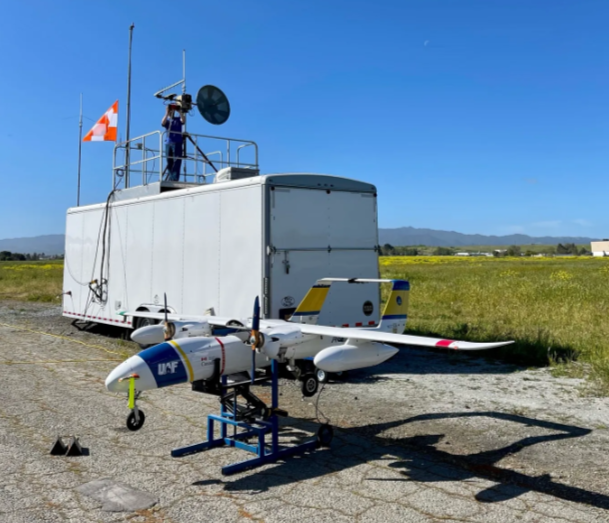The Federal Aviation Administration (FAA) reports successful shared airspace operations during a simulated wildfire environment in California in Spring 2023, reports an FAA article published by Medium. According to the report:
The FAA is testing systems to make sure firefighters, first responders and nearby pilots can share timely information to ensure a safe airspace during wildfire fighting operations.
“There’s a lot of aviation activity,” said Collin Roche, manager for Unmanned Aircraft Systems (UAS) projects at the FAA. “With unique traffic patterns for firefighting aircraft operating around a wildfire as well as the presence of general aviation and commercial aircraft in nearby airspace, it can become a bit of a beehive.”
Keeping airspace safe around wildfires requires complex coordination among air traffic controllers and pilots of different types of aircraft, including helicopters, C-17s, and, more recently, drones. Adding to the complexity are the different entities fighting fires, such as local and state firefighting departments, medical first responders, and the U.S. Forest Service. Air tactical group supervisors, positioned above wildfires, manage fire traffic and offer situational awareness to firefighting aircraft and other pilots who may be flying nearby.
Effective information sharing and communication is critical. The FAA’s test sought to answer three main questions about air traffic coordination around wildfires: What information is available and from whom? To whom does the information flow? How do they use the information?
Test exercises took place over three weeks in the in Spring of 2023 in a simulated wildfire environment near Hollister, California. It comprised more than 100 flight runs using SeaHunter drones operated by the Alaska Center for UAS Integration (ACUASI) and Xwing’s remotely piloted Caravan aircraft.
This effort was supported remotely by the FAA NextGen Integration and Evaluation Capability laboratory in Atlantic City, New Jersey. The lab created a simulated environment in which different scenarios could be presented to pilots, and in which pilots could speak with simulated air traffic controllers. ACUASI — an FAA-funded UAS integration program — partnered with industry members at Advanced Technology Applications, Airspace Integration, and Xwing, who collectively conducted live flights, managed activities at Hollister, integrated systems, and collected and analyzed data.
The test involved multiple scenarios with manned and unmanned operators and simulation air traffic controllers. In addition to providing participants with information regarding air traffic services, the test also shared information about Extensible Traffic Management (xTM), such as drone operations.
Post-flight analysis of the data and assessments from pilots and simulation controllers indicate that xTM information sharing across various lines of communication is feasible and of value to the test participants. It also showed that test pilots preferred more information delivered as soon as possible. Results will help the continued integration of drones into the National Airspace System
This past October, the FAA also established the Wildland Fire Airspace Operations Research Transition Team in a multi-year collaborative agreement with NASA. Outputs of this research effort will determine the future needs and direction of wildland fire management.
(Image: ACUASI SeaHunter Aircraft and Ground Station. FAA)
For more information visit:
www.faa.gov




